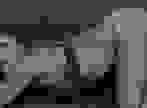- Reviews & Essays
- Facts About Our Existence
Note: You can change font size, font face, and turn on dark mode by clicking the "A" icon tab in the Story Info Box.
You can temporarily switch back to a Classic Literotica® experience during our ongoing public Beta testing. Please consider leaving feedback on issues you experience or suggest improvements.
Click hereThe word "existence" is used in place of "life" because so far no one has been able to define what exactly life is. That has puzzled many, including Erwin Schrodinger, a Nobel winning physicist who wrote a book titled: "What Is Life".
What's more, most of this existence is mostly unknown to most of us. For instance, while we sleep, we may toss and turn every now and then, but quite often we are stationary—or not. If not though, why not?
Because Earth spins on its axis like a toy top that children play with that spins as it moves about in an arc, save that the rotation of Earth can be as much as about one thousand forty miles per hour, depending on where we are. Those who exist in Los Angeles are always spinning at about eight hundred sixty miles per hour. In New York, everyone is spinning at about seven hundred eighty miles per hour, and in London, about six hundred fifty miles per hour. The closer to the equator one is, the faster the speed one travels on the earth's axis, though at the poles, we don't spin. Yet while we spin, we don't notice it either because the Earth is so large, or we are so small in comparison.
Even more, the earth speeds around the sun—sort of like the toy top moving in an arc as it spins—at a speed of about sixty-six thousand miles per hour. So, are we spinning at the speed of the axis, or at the speed of Earth moving around the sun? Two different speeds, yet both are the speeds at which we spin all the while we may be doing nothing.
Is that all though? Not quite. The sun also spins about the center of our galaxy (the Milky Way) at a speed of about four hundred eighty three thousand miles per hour (or we can say that it takes two hundred twenty-five million years for our sun to make one trip around the center of our galaxy and taking us, and the other planets in our solar system, along with it. The sun is thought to have made about twenty trips around our galaxy in its life time. The size of the Milky Way is still being debated; to date, it is anywhere from sixty thousand light years , or larger, from one end to the other (a light year being the time it takes light to travel—normally at 186,000 miles per hour, in a year). That's why the sun takes so long to circumnavigate around the Milky Way.
Is that trifecta all? Not quite. Our galaxy itself is also moving at about 1.3 million miles per hour! Taking our solar system along for the ride with it, of course, and us too. Vertigo anyone?
* * * *
At first, it was commonly thought that the earth was the center of the Universe, then that the Milky Way galaxy was the Universe, and, of course, we were at the center of it all, and more, that ours was a special planet, the only one with "life" and humans. When it was suggested that these thoughts were not so, the church (Catholic at first, then Protestant too when they came into play), objected strenuously. Nothing in the bible suggested anything like that, and the bible was considered truth.
Many scientists thought otherwise, but most kept those thoughts to themselves. Galileo learned to do so the hard way, but Giordano Bruno didn't. The Catholic church was said to have a warrant out for him while he moved about the continent hiding from the clutches of the church, but he made the foolish mistake of returning to Italy where the Catholic church was said to have imprisoned him for about eight years before handing out its final judgement against his heresy of backing Copernicus' theory, as well as other heretical thoughts. For that, they gave him the death by the stake, but he was said to be burned while still very much alive.
Is it any wonder that it took so long to learn and attempt to pass on the facts of existence? As late as the early twentieth century, a poor biology teacher in Dayton, Tennessee dared to teach evolution, and brought about the famous "Monkey trial" that found him guilty of being wrong, against Tennessee law, not to mention god's laws.
We are slow as can be to accept scientific fact!
Even in this day, there are those who insist that the earth is a flat disc. They even have an Internet site.
There are also many who do not believe that the suns (stars), if they're massive enough, are like a gigantic furnace and make all the heavy elements like carbon, iron, gold, and even oxygen.
These heavy elements (atoms), are made by fusing together hydrogen that fused into helium, and then, with the aid of a special atom, a very rare beryllium, fused with helium and made carbon. Carbon is what we often hear of being what we are made of. Actually, it is not by percentage, but without carbon, the other atoms that make us up wouldn't be able to bond together without it. Without carbon, we could not exist in the way that we do.
This fusion process, once thought impossible, was possible due to the high heat generated by the red giant stars. If a star is massive enough, when it burns itself out, it may go super nova, exploding and spewing out all of the heavy elements that it had fused together, sending them throughout the Universe.
Though fusion was thought impossible, it was proven that it is not impossible, but fact, and has been proven so. Following is how, and why it is so important.
* * * *
A gadfly, Sir Fred Hoyle, was the physicist who set the stage for proving how it was that the heavy elements were made. Other scientists such as George Gamow had thought of it as Hoyle did, but couldn't come up with what would provide the intermediate step. Beryllium was the key, but there were several types of it. Hoyle, however, did what the computers couldn't do by manually going through it all, and figured that there had to be a beryllium with an energy value of 7.65 mega electron volts (no, don't ask me to explain it, but it happened). He figured out what it must take to accomplish it; what resonated with helium that would form carbon.
To prove his theory, he had to have it tested. Going from England to Cal Tech, he pestered William Fowler at Cal Tech, to run a test of his theory. With exact timing, he'd figured that one of four forms of beryllium had an extremely short life—only a fraction of a second. That fourth one had a life of 0.000000000000001 of a second. Still, many scientists didn't believe it, but it was irrefutable. The Cal Tech lab found that it could be done, and the carbon atom was the result.
The theory of the stars acting as furnaces and making not only carbon, but other heavy atoms became accepted as fact.
This all came about by theorizing that only the stars could make such a fusion possible, that all heavy elements were made by the fusion process in the stars. Stars are like a furnace for making heavy elements, and when they are made by massive stars that go super nova, those elements shower the Universe.
Spectroscopy (easily found on the Internet) shows which elements are in the various stars. Each element has its own "fingerprint". This is a scientifically proven fact. Every element has its own color scheme that can be seen with a spectroscope.
If nothing else, this proves that chapter two of the book of Genesis is false, a fable, for humans could not be made of the dust of the earth. Obviously, no rib taken out of Adam could form Eve. If this is a fable, then the Garden of Eden and the serpent in the garden are also false, and so is the so-called genealogy that ensues. Its all a story that some very intelligent Jews made up, but with little real knowledge of what it is that truly composes us as humans.
Was Hoyle ever awarded a Nobel Prize? No. His irritating words were said to make the egos of the selecting members unwilling to reward him though he justly deserved it. Carl Sagan was treated similarly by our version of the Royal Society of English fame even though many, including his first wife, Lynn Margulis, pushed for his acceptance into the National Academy of Sciences.
Of Galaxies, Stars, and Planets
There is an estimate of one hundred seventy billion (170,000,000,000) galaxies in the known Universe. The trouble with that is that the known Universe may be larger than they now think.
In the last twenty years, our scientific knowledge of the Universe has expanding almost exponentially. This, in great part, is due to satellites that we've put into orbit: Spitzer Space Telescope; Kepler Mission satellite; and WMAP satellite, not to mention the Hubble Space Telescope. Other nations also have put up satellites, including the European Union. First the Hubble telescope gave us many astounding pictures of distant stars and galaxies, but since then, The Kepler Telescope has given us even more. Still, we have no idea just how huge the Universe really is. Maybe, if the number of galaxies doesn't impress one, the stars will.
It has been estimated that there are over a septillion (that's 1 plus 24 zeros after it) stars, with some galaxies being prodigious star creators. Others say one hundred octillion, or 1 plus 29 zeros. Some spiral galaxies are said to contain "...more than one trillion stars," and " some giant elliptical galaxies," having 100 trillion stars. Check out the Internet for some reputable quantities.
In the book of Genesis, chapter 22, verse 17, we are told that God promised Abraham:
"That in blessing I will bless thee, and in multiplying I will multiply thy seed as the stars of the heaven, and as the sand which is upon the sea shore;..."
As one can see, that hasn't come anywhere near true. The writers of the bible had no way of knowing what is now known by our scientists. More, they never expected that there would ever be so much knowledge as is now available to all of us, or that most people, at least in the Western world, would be able to read and write.
* * * *
For thousands of years, humans thought that the earth was the center of the Universe. Churches taught that humanity was special only to earth, that there were no other beings anywhere else. We, the Christian church preached, were the only ones that had what we call life; there were no other planets like ours.
They didn't know about the Kepler Mission, nor could they back then, but even now, it must be making their heads spin (but not with the motions of the earth, solar system, or our galaxy). Why?
Kepler, primarily, has identified—so far—over a thousand alien planets (exoplanets); all together, close to two thousand have been identified by all the satellites.
More From Space
The Murchison Meteorite fell in Murchison, Victoria, Australia in 1969. On February 14, 1997, findings by scientists: Dr. John Dronin and Dr. Sandra Pizzarello, wrote that ninety two (92) different amino acids were identified.
Our DNA defines the amino acids that make up proteins that then do the work in our bodies. There are twenty (20) of these amino acids available to make up these proteins that are in our bodies. On the Murchison Meteorite, nineteen (19) of our twenty (20) amino acids were among those ninety two amino acids found on the meteorite.
On December 20, 2001, it was reported that NASA scientist, Dr. George Cooper and co-workers, discovered sugar and several related organic compounds in the Murchison Meteorite.
Recently, within the month of June, a European satellite landed on a comet, and finally sent data with regard to its findings. Before it lost battery power, it sent back that a couple of molecules were found to exist there. How did what we call life really begin?
Others reportedly found other organic, carbon-based compounds in other meteorites. The mysteries of our existence are many, as are our origins. For millennia we have existed on this planet with no idea why we are here. In fact, we actually know little about many aspects of our being. For instance:
Astounding things about atoms
There is no longer any doubt that we're made of atoms, and not dust as in chapter 2 of the bible's book of Genesis. Further, atoms make molecules, and molecules make our cells, and our cells are aliving society that functions, for the most part, with us being unaware of them, but those cells make us "us".
By the way, many of you may know of a television program that was called Quantum Leap (staring Scott Bakula who now plays the title role on NCIS New Orleans, and Dean Stockwell). In Quantum Leap, Bakula found a way to live in two different worlds: the world we know, and the past world via the use of Quantum Mechanics.
Quantum mechanics is the theory of the world of the sub atomic. Many have said that Quantum Mechanics and what we know as our world—the Classical Physical world—do not mix. That's not quite true, and yet it is true. Why?
We are made of atoms, and atoms are just that: atoms.
Not to bore anyone, but there is an experiment called The Two Slit trick. In this experiment, a captured atom is shot to a wall that has a hole in it. The atom goes through that hole without a problem, naturally, but then it encounters a second wall that has two holes. The experiment is designed to learn which hole the atom will select to go through.
The problem (to us) is that the atom has the property of living in our "Classical" physical world, as well as the quantum world, a world that is more than strange, it is one we don't understand, but every test of it has proven it exists as stated. In this case:
The atom goes through both holes at the same time, and comes out the other end as a wave, or rather two waves (photons, i.e.; light, electrons, etc. are also waves as well as particles according to how they're "observed, or not").
Unbelievable? Weird? Yes, but true! The atoms that make us up live in two different worlds: as a part of us as we familiarly know us, and as Quantum creatures! (See: Quantum by theoretical physicist in the UK, Jim Al-Khalili, 2003, in US, by Sterling Publishing Co., Inc.)
Just as odd is that when we, or any creature, dies, the atoms live on and are free tp be used elsewhere or float freely trapped in our biosphere. We may die, but what we are created from doesn't.
Other Odd, or Not So Odd, Facts
We have no idea where this thing called intelligence came from, but we have it just as we have that capability called insight along with language. In short, we have no sure and irrefutable knowledge of how we came to be in so many ways! What we have are facts derived from observations of many types and from many sources.
Our bodies have eighty to one hundred thousand structural genes (Investigations, by Stuart Kauffman, Oxford University Press, 2000). It is known that one can add other genes within their lifetime. These genes have start and stop mechanisms (that sometimes go wrong), and also turn off and turn on other genes.
Barbara McClintock discovered that genes could, and do, at times, move. Yes, they literally travel. Furthermore, a transposed gene could affect other genes. More, some controlling genes appeared able to increase mutations in the cell (A to Z of Women in Science and Math, by Lisa Yount, 1999). Ms. McClintock presented her findings in the early 1950s, but her presentation was reportedly laughed at.
About a decade later, Ms. McClintock began receiving kudos and awards. In the late 70s, other geneticists found that she was correct. Transposable genes came to often be called jumping genes. Finally, in October of 1983, she was awarded a Nobel Prize. Vindication was a long time coming.
* * * *
We have discovered that no cell can be made by any other way other than to split off from an existing cell, yet there must have been an initial cell that started it all, but exactly how that first cell came to be is something that has been theorized by many, but proven by none.
We have about two hundred sixty different cell types (Kauffman, Investigations, Oxford University Press, 2000).
There have been reported to be as many as seventy five trillion cells (measuring from 0.0002 to 0.0008ths of an inch—The Wisdom of the Body, by Dr. Sherwin B. Nuland, page 102). Other estimates vary wildly, but they are all in the trillions. What is truly odd to most of us is that each cell is considered a viable life form able, and under the right conditions, to be able to live independently. However, none of these estimated quantities of cells has been verified, but in the trillions sounds right.
We are therefore said to be a society of cells. Cells have their own sense of justice wherein the cell works with other cells, or it is disposed of. Also, a female is born with six to seven million eggs (cells), but through apoptosis, by the time she is ready to menstruate, she has only about four hundred-sixty eggs left.
* * * *
We are conscious of ourselves, aware that we are aware of ourselves, but to different degrees by different people—and we don't know where consciousness came from initially, or how; we can only guess.
We think, and perhaps can guess where those thoughts originate, but we don't know how this came about—that is, what the original mechanism for it brought it about, or what the mechanism might be that makes words that mean what we wish them to say.
We have what we call minds, but we have no idea what it really is, or where it is. In the past it has been guessed that our brains were our minds, but no longer. We have discovered that there are over a trillion brain cells that mysteriously pass electric and chemical messages, but how our brain reads and understands them is another mystery. We do know, however, that there are different types of these nerve cells and many of them are very dedicated, have specific purposes.
In fact, there is a part of our brain that was discovered recently: the Insula. The insula has been thought to contain what are called "mirror" nerve cells, or "what if" cells. They are thought to be what it is that makes mimicking possible, as well as empathizing.
There are many different types of nerve cells. It is thought that habits are nerve connections which account for the habit's recurrence, well, habitually, since the connection is always there.
Nerves are being discovered to be much in control of our being. For instance, a woman is quoted as having "...the odd syndrome of reduplicative paramnesia, a duplicative belief that a place has been duplicated or exists in more than one spot at the same, or has been moved to a different location."
Dr. Michael Gazzaniga, a neuroscientist, tells of a patient in his office at New York Hospital who swore she was at home in Freeport, Maine. When asked how come there were elevators outside the door, she responded calmly, "Doctor, do you know how much it cost me to have those put in?"
She, in fact, had a lesion in a part of her parietal lobe. (See: "Human", by Michael S. Gazzaniga, page 299, or "Who's in Charge", same author, page 49).
* * * *
There is much about us that is innate, just there, and we naturally discover its presence in us and use it, though we are far too often guided in how to use what is in us to the profit of others who tell us this, that, or the other in order to benefit their own purposes. But how did all of this innate-ness come to be?
Okay, let's for a minute, get religion out of the way, and the idea that some mysterious god such as in the bible put it all there. DNA is shredding that notion rapidly, as soon the finds from outer space will do so too.
On January 21, 2013, I had posted on this site an essay with regard to Neanderthal's and the bible (it is still up if you wish to read it). While I wrote that, other information was coming to light. The idea that humanity is six thousand years old, or ten thousand at the most, is pure and utter nonsense, and that is further born out by some of the subsequent findings of older peoples.
On PBS (our public broadcasting system), there is at present (July 3, 2015), a series about our "First Peoples" and the evolving thinking of how we came to be as homo sapiens. There is also an article on the Internet from National Geographic on one of the main focuses of the PBS series, a cave in Russia that housed a people called Denisovans (mentioned in my earlier essay mentioned above).








